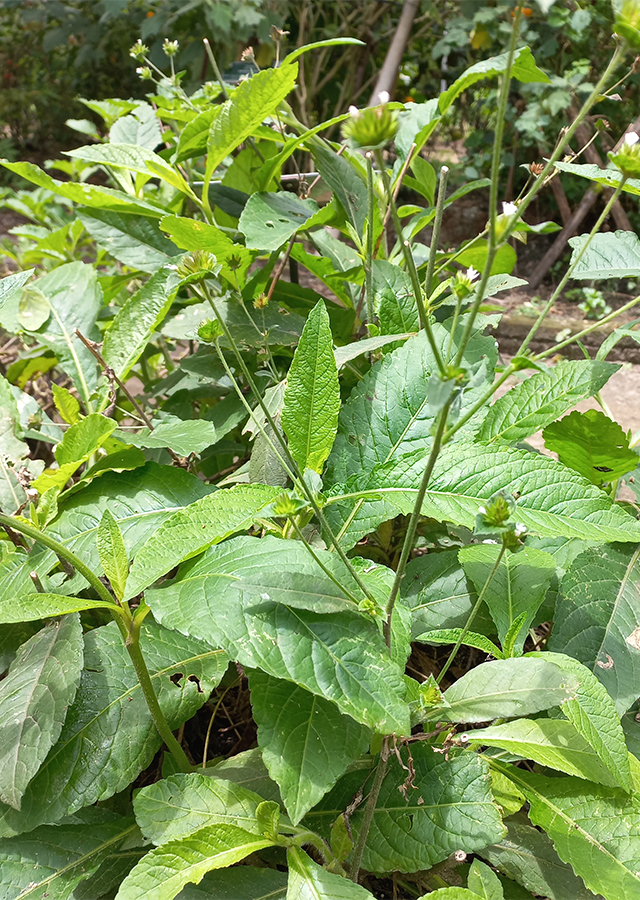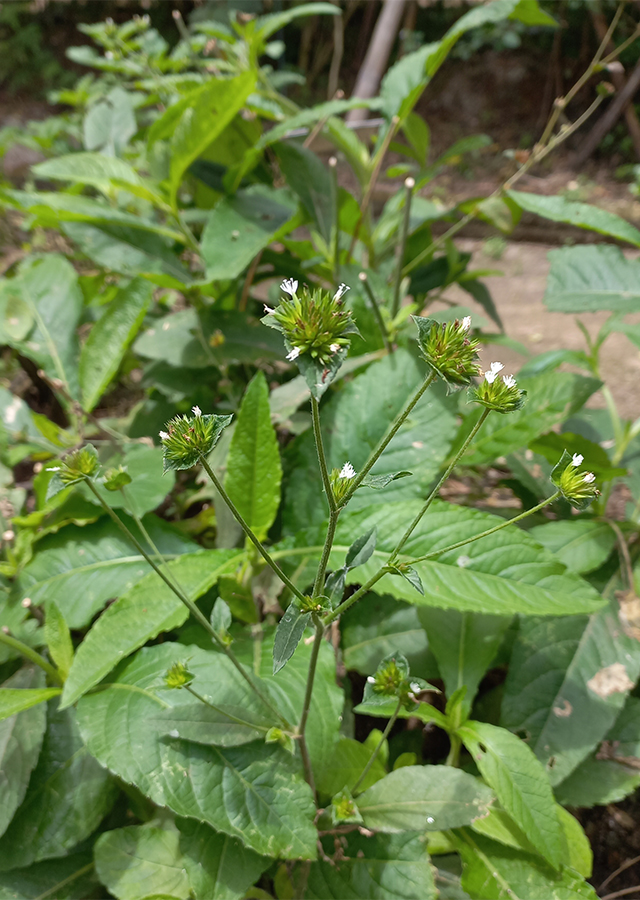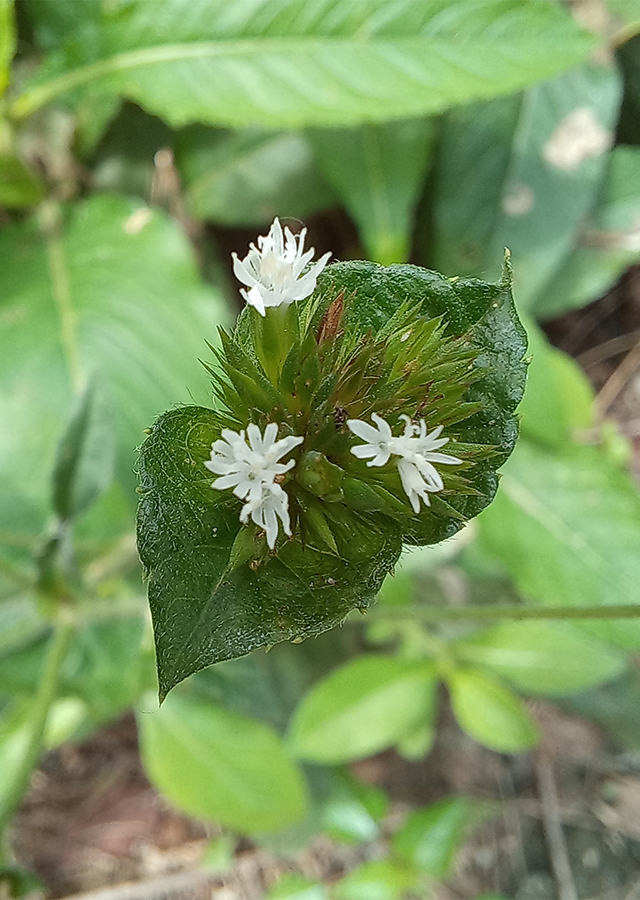Elephant's Foot
Elephantopus mollis Kunth
Asteraceae
Location in our garden
Beneficial Weed



Synonym
Elephantopus carolinensis G.Mey.
Elephantopus serratus Blanco
Elephantopus cernuus Vall.
Habitus
Herbaceous. A herbaceous perennial plant growing up to 100 cm tall, occasionally from a creeping rootstock
Part Used
Leaves
The Whole Plant
Growing Requirements
Full Sunshine
High Rainfall
Habitat
Wetland
Forest
Roadside
Shrublands
Grassland
Terrestrial
Overview
Native to the American tropics, it has been widely introduced elsewhere since the beginning of the 20th century, to Africa, Asia and the Pacific, where it has become an invasive weed of pastures and plantations in high rainfall tropical situations in many countries. The plant is harvested from the wild for local medicinal use.
Vernacular Names
Litup bumi (Malay), jangli tambaku (India), Di dan cao (Chinese), Alberrania (Spanish), faux tabac (French), erva-de-colegio (Brazillian).
Agroecology
Found in open waste places and grasslands; at elevations up to 2,000 m. Requires a position in full sun, thriving in a range of moisture conditions. Thrives on high soil fertility but also tolerates poor soils, and is reported as a problem weed in degraded pastures.
Morphology
- Stems - whitish pilose.
- Leaves - alternate, ovate to lanceolate, scabrid above, pilose below, 5–25 cm long, 3–10 cm wide, the margins shallowly to sharply toothed, lower surface gland-dotted and resinous. The leaf stalk is winged and decurrent.
- Flowers - flower heads are up to 2 cm across with small white or purple florets about 4 mm long, surrounded by 3 leaf-like bracts about 1 cm long.
- Fruits - 2.5-3 mm long with pappus bristles equal and 3.5-4 mm long.
- Seeds - black, about 3 mm long, densely covered in fine short hairs, apex with 5 white bristles 3–4.5 mm long, each with a broad base; receptacle without scales.
Cultivation
Propagated by seeds.
Chemical Constituents
Caffeic acid, dicaffeoylquinic acid, dihydroxy-cinamic acid methyl ester, molephantin, molephantinin, deethoxy-2-hydroxyphantomolin, 2-de-ethoxy-2-methoxyphantomolin, stigmasterol, amyrin fatty acid ester, lupeol fatty acid ester, sesquiterpene lactone, lupeol acetate, epifriedelinol, molephantin and epifriedelanol.
Traditional Medicinal Uses
- The plant contains the sesquiterpene lactone, deoxyelephantopin, which is an anti-tumor chemical.
- The leaves and whole plant are antibacterial, antiviral, diaphoretic, diuretic, febrifuge, hepatic, tonic and vulnerary. They are also reported to have an emetic action.
- Applied externally, the leaves are macerated between the hands and the juice then applied topically to relieve itching, especially when this is due to athlete's foot.
- The leaves, both fresh and crushed or dried and powdered, are applied to wounds as a vulnerary.
- In Burma, decoction of aerial parts drunk to treat irregular menstruation.
- In Cameroon, plant used to facilitate bone fracture healing.
- In Mauritius, oiled crushed leaves applied to facilitate wound healing.
Part Used
Reference Sources
- Fern, Ken. Useful Tropical Plants. (2021). Elephantopus mollis. http://tropical.theferns.info/viewtropical.php?id=Elephantopus+mollis. 11-10-21.
- StuartXchange. Philippines Medicinal Plant. (2018). Elephantopus mollis. http://www.stuartxchange.org/Malatabako.html. 11-10-21.
- Cabi. Elephantopus mollis. https://www.cabi.org/isc/datasheet/114063. 11-10-21.
- Plant Resources of South East Asia. Elephantopus mollis. https://uses.plantnet-project.org/en/Elephantopus_mollis_(PROSEA). 10-11-21.

